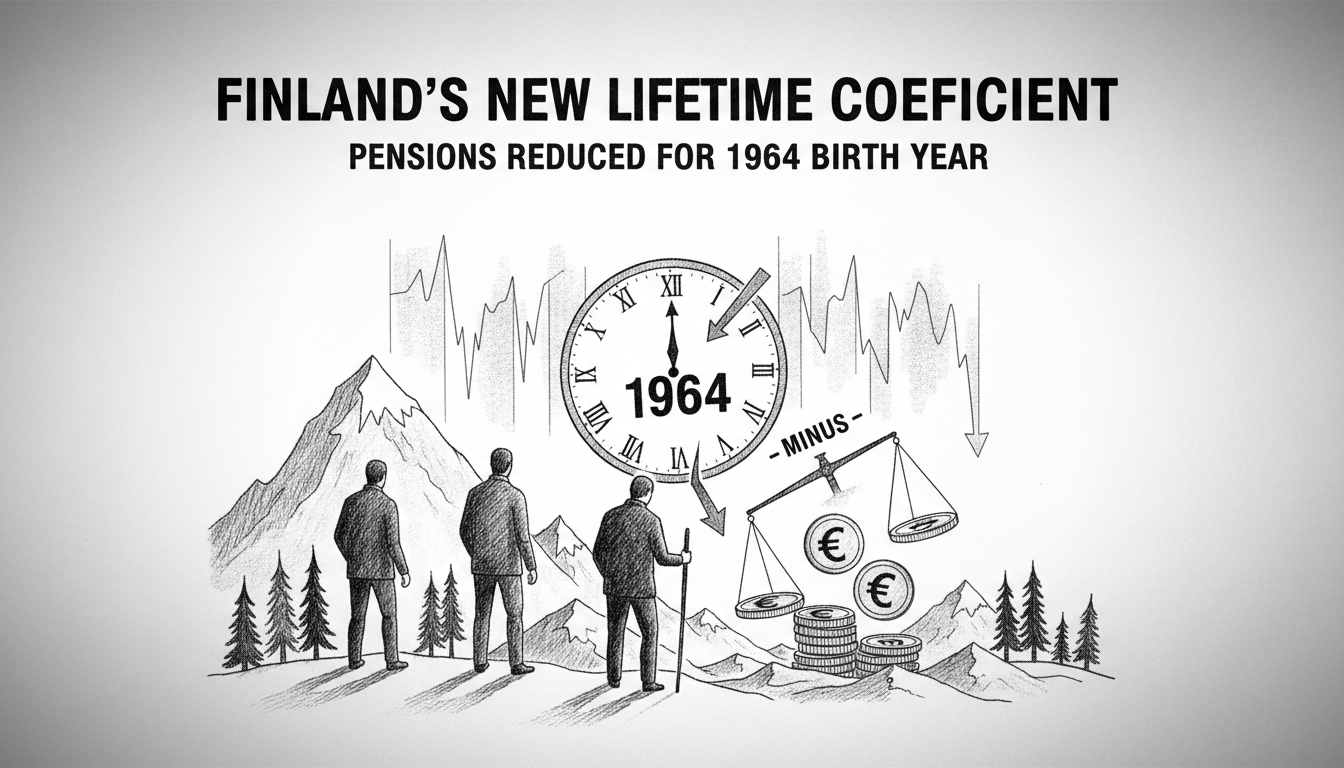Finland's Ministry of Social Affairs and Health confirmed a new lifetime coefficient for pensions on Thursday. People born in 1964 will see their future retirement benefits reduced by approximately 5.4%. The specific coefficient set for this group is 0.94643.
The lifetime coefficient system directly affects retirement calculations. It applies to old-age pensions starting in 2026 or later. The mechanism also impacts disability pensions and various other pension types including survivor benefits and partial early retirement pensions.
This policy aims to control rising pension costs caused by increasing life expectancy. Officials want workers to stay in employment longer to compensate for the reduction effect. The coefficient locks in when pension payments begin and remains unchanged thereafter.
For concrete understanding, consider someone born in 1961 with accumulated pension rights of 1,977 euros. Their lifetime coefficient of 0.94419 reduces the actual pension to 1,866.66 euros monthly before taxes. That represents a 5.6% decrease from the accumulated amount.
Finland's pension system faces pressure from demographic changes. The country has one of Europe's most rapidly aging populations. This creates financial strain on social security systems. The lifetime coefficient represents a mathematical solution to this demographic challenge.
International readers should understand this affects Finland's entire working population. The system applies progressively to different birth cohorts. Each year's new coefficients generate public discussion about retirement security.
Many workers express concern about planning their retirement with these reductions. The system creates uncertainty for those nearing retirement age. Some experts question whether encouraging longer work lives aligns with labor market realities.
Finland's approach contrasts with other Nordic countries. Sweden uses a similar automatic balance mechanism. Norway and Denmark have different systems for managing pension sustainability. This reflects varying political choices about sharing demographic risks.
The practical implication means people must work longer or save additional funds privately. The reduction affects monthly income throughout retirement. For average earners, this could mean hundreds of euros less monthly over a 20-year retirement period.
Future pension reforms remain likely as life expectancy continues increasing. The current system automatically adjusts coefficients annually. This creates predictable but gradual reductions for each new cohort entering retirement.
What does this mean for Finland's economy? Longer working lives could boost economic output. But it might also reduce opportunities for younger workers. The balance between these factors remains debated among policymakers.
The system shows how Nordic countries tackle demographic challenges with transparent mechanisms. Rather than sudden political decisions, automatic adjustments provide predictability. Yet the human impact remains substantial for individuals planning their futures.

